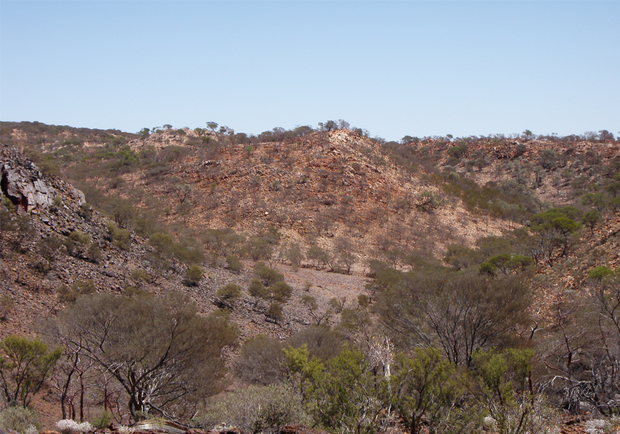
Archean conglomerate from Jack Hills in the northwest Murchison contains the world’s oldest zircon crystals, dating back to 4.4 billion years ago.
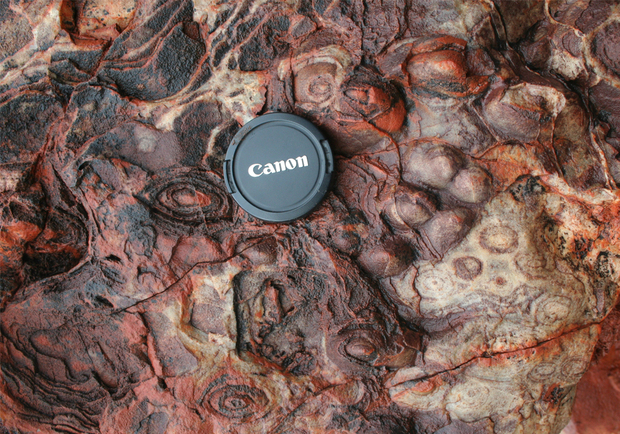
Conical stromatolite (view from the top) at the Trendall locality in the Pilbara.
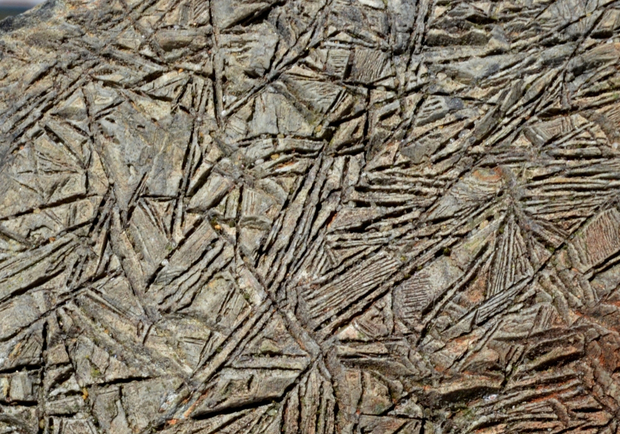
Spinifex-textured komatiites formed during Archean times in volcanic greenstone belts. These magnesium-rich rocks have chemistry not observed in rocks younger than 2.5 billion years old.
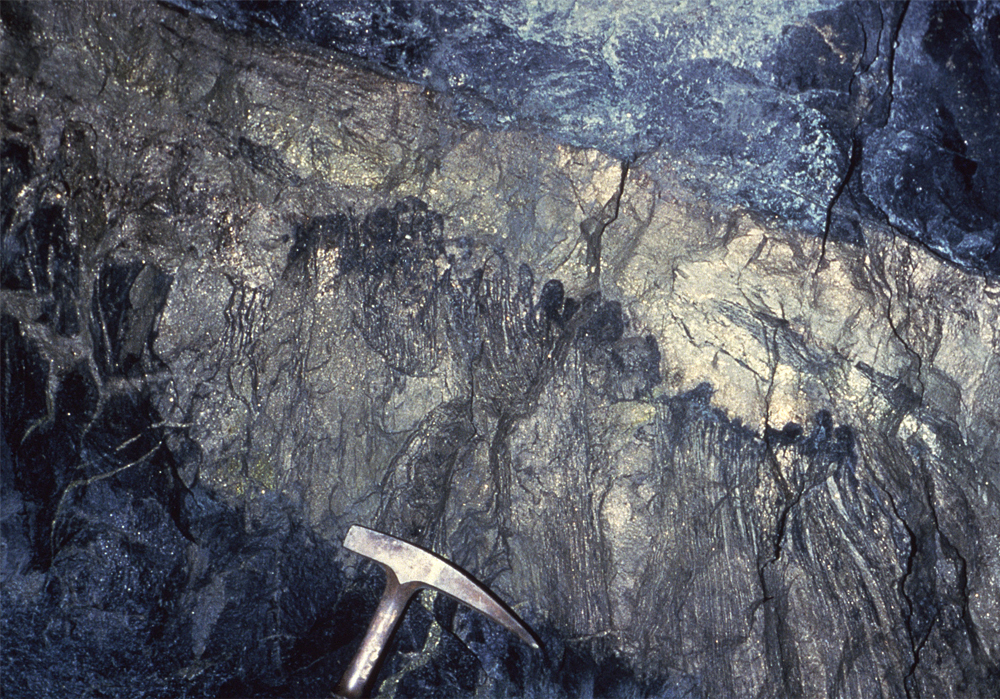
World-class nickel deposits are hosted by Archean granite–greenstones near Kambalda in the Eastern Goldfields. Their discovery in the 1960s led to a nickel boom.
Stromatolites contain a record of the earliest forms of life on Earth. They were first built by microbial communities and during time contributed to the oxygenation of the atmosphere. The oldest stromatolites in Western Australia are found in 3.5 billion-year-old rocks in the Pilbara.
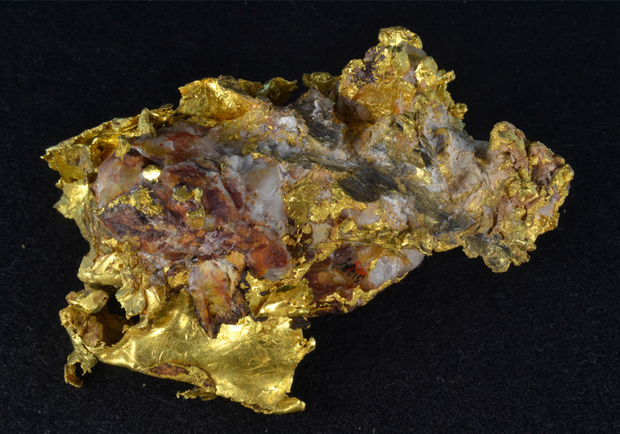
World-class gold deposits are hosted by Archean granite–greenstones near Kalgoorlie. Gold was discovered here in 1893, and is still mined in the Superpit from the Golden Mile Dolerite.
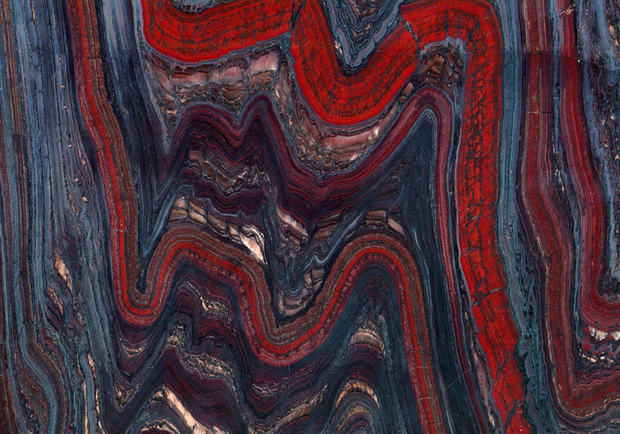
Banded iron-formations have spectacular structures comprising multiple bands of green, blue, red and orange jasper, interspersed with bands and blebs of golden tiger eye. The hematite-rich varieties are mined for iron.

Banded iron-formations 2.5 billion years old form giant iron ore deposits in the Hamersley Range. The Mount Whaleback Mine is the largest opencut iron ore mine in the world, with a pit length of 5.5 kilometres.
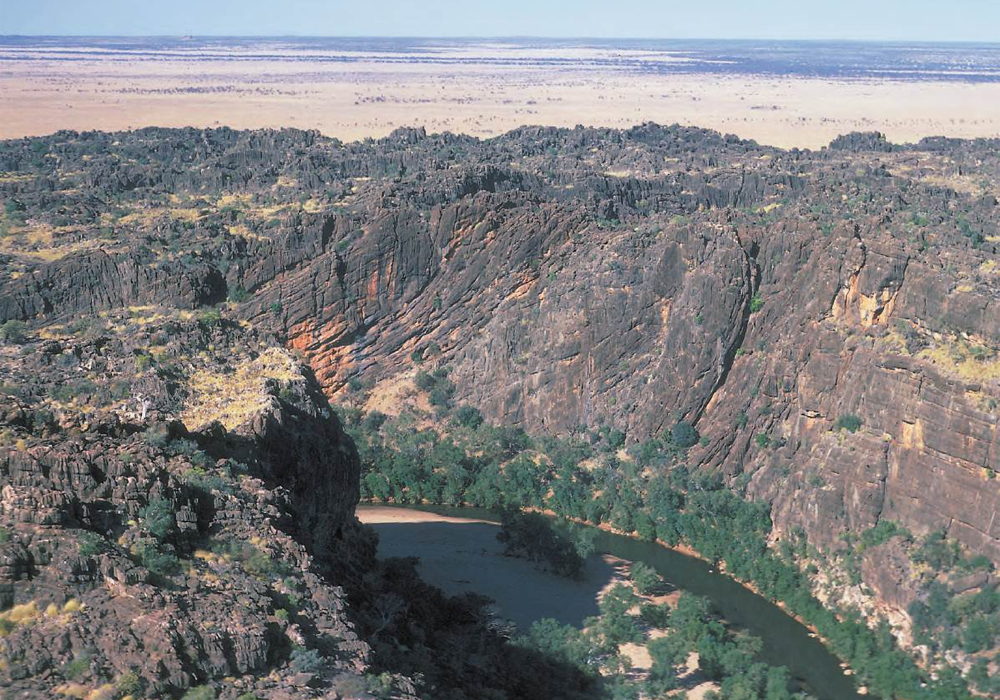
The classic face at Windjana Gorge, showing the back reef (right), reef and fore-reef (left). The barrier reef at Windjana Gorge in the West Kimberley is a 380-million-year-old reef complex from the Devonian age of fishes.
The Devonian reef complexes form a spectacular belt of rugged limestone ranges that extends for 350 kilometres along the northern edge of Western Australia's Canning Basin. These complexes are regarded as the world's best example of an exposed ancient barrier reef system, and have become known as the Devonian Great Barrier Reef.

Pinnacles of limestone stand like sentinels in the sandy desert of the Nambung National Park. Their mode of formation is still the subject of debate, but most likely trees and vegetation acted as cores to the pinnacles.

Modern-day stromatolites from Hamelin Pool.
Modern stromatolites grow slowly, around Hamelin Pool at Shark Bay, a World Heritage Area. These ‘living fossils’ are the descendants of some of the earliest forms of life that developed on Earth.
